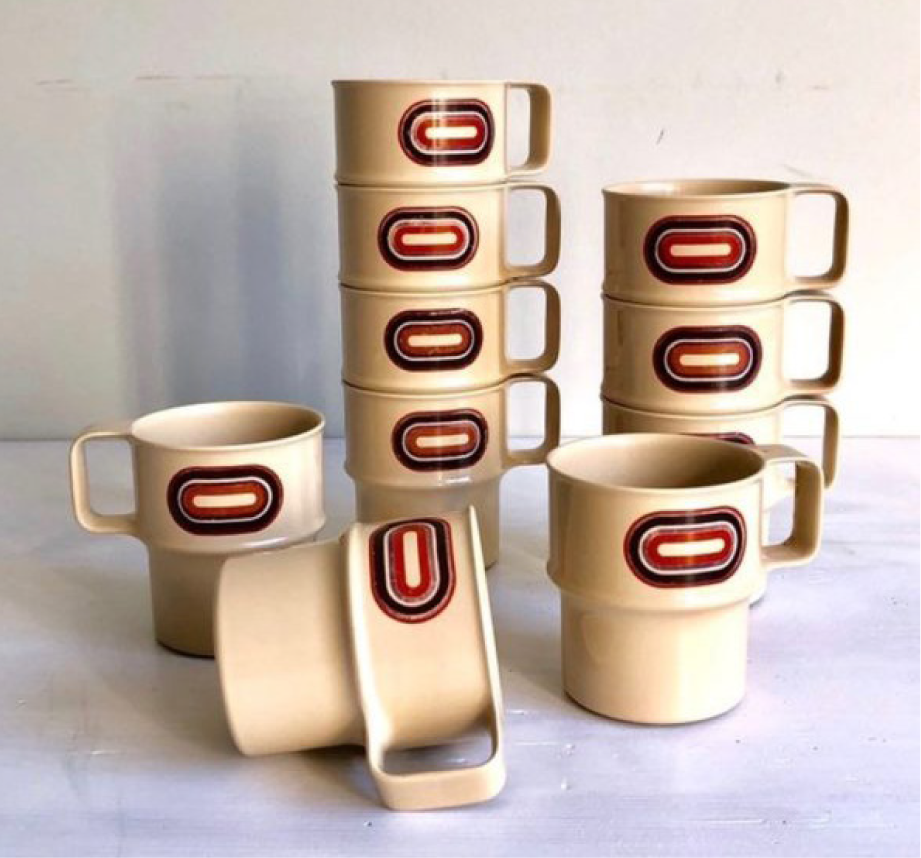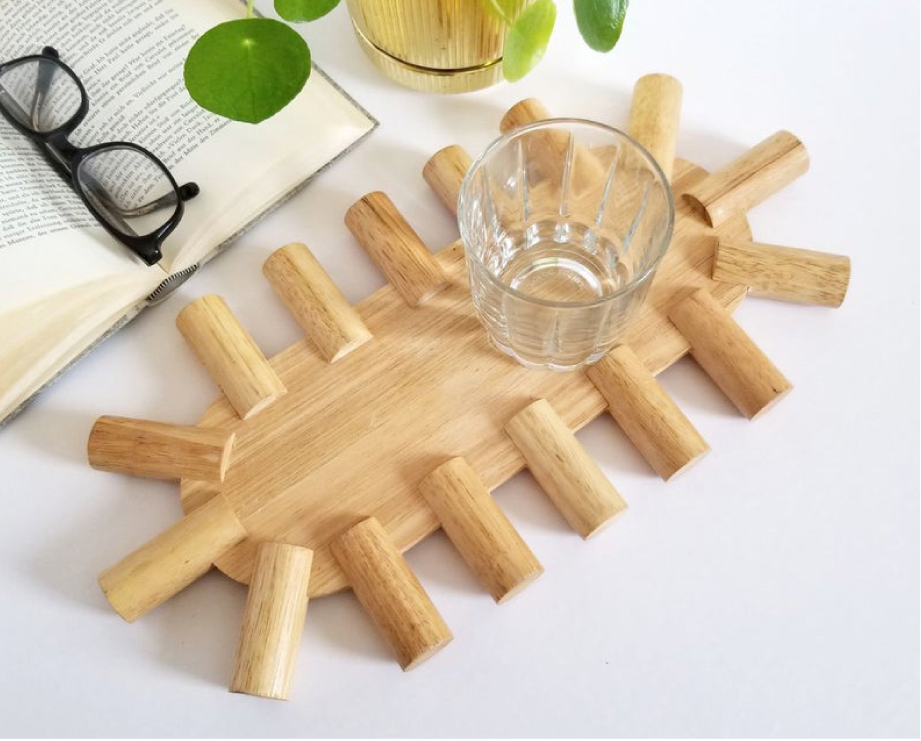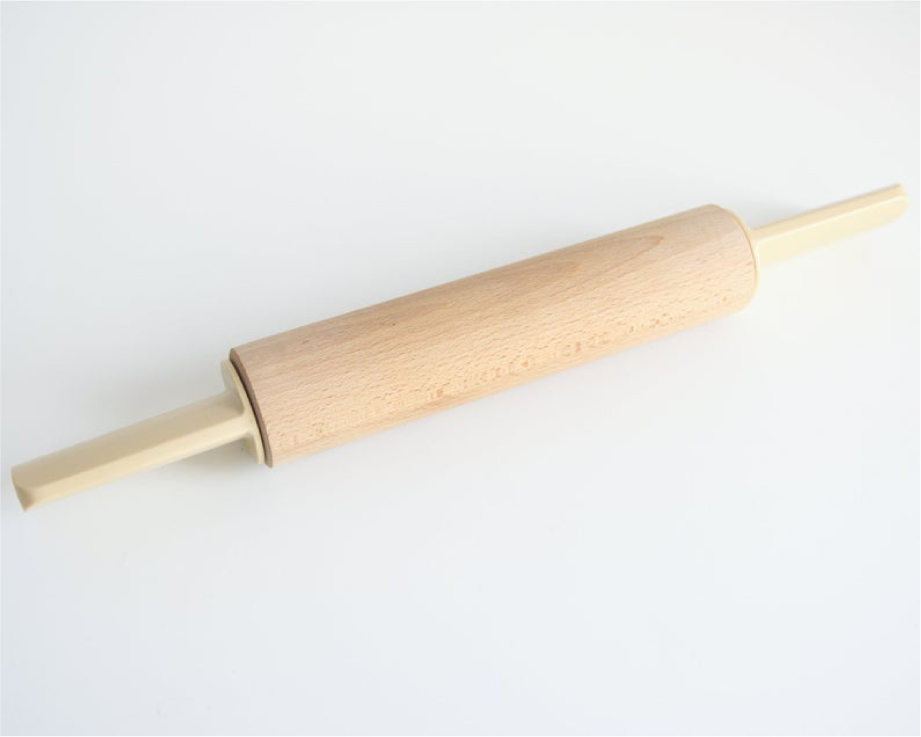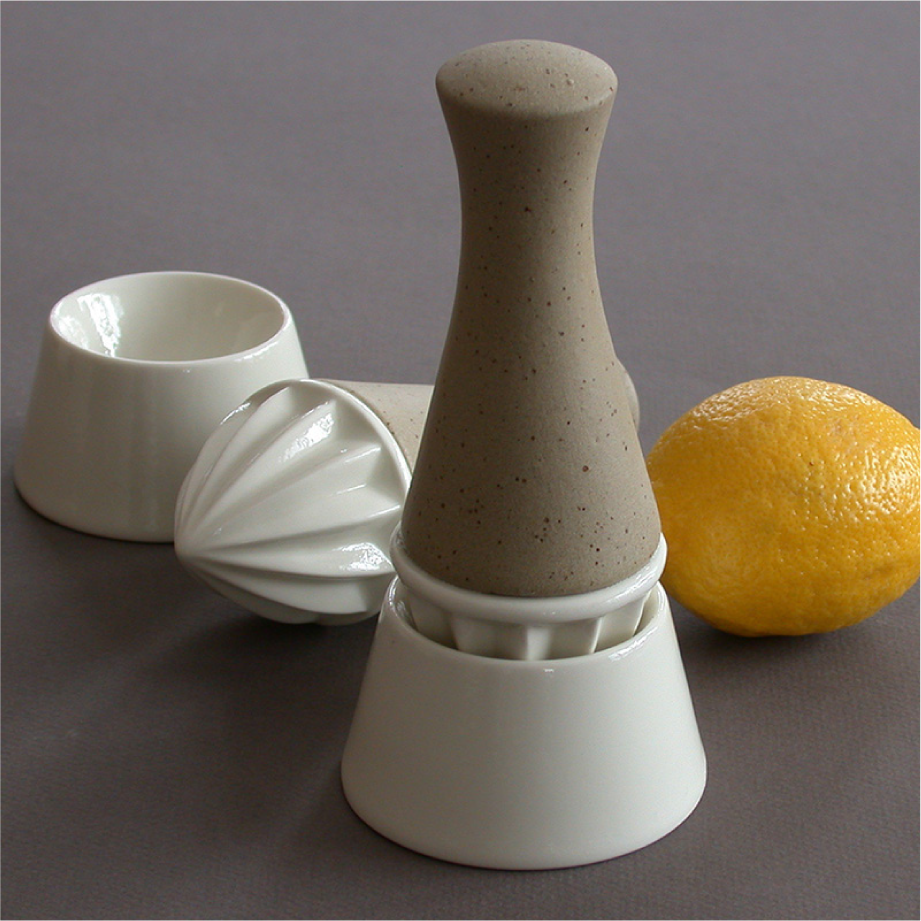People / Published on June 7, 2021
Share to
CONSULT THE ORIGINAL ARTICLE IN
INTÉRIEURS #68
KOEN DE WINTER
Interview by Madeleine Champagne and Anne Darche, published in INTÉRIEURS # 68 – 2016, to present the 2106 GRANDS PRIX DU DESIGN TRIBUTE AWARD winner, Koen de Winter, ceramist, artist, designer. Updated in 2021 by Juli Pisano for INT.design.

NOTHING BUT CLASS
In an enchanting space made of blond wood, a man looks at me with a smile of great serenity, a pale blue shirt, beige pants, a tobacco-colored wool scarf. Everything about him exudes wis-dom, poise, kindness. Such is Koen De Winter.
RESILIENCE
He was born on May 28, 1943, in Mortsel, Belgium. He calmly recalls his childhood as “surreal”. An example? In his collapsed commune of his, the children tear off the wallpaper from the destroyed walls to make drawings and their teacher, Sister Félicienne, then offers little Koen to color the advent wreath respecting the shapes, but with only one pencil! A black pencil! Bitter memory? On the contrary, this stage gave him a sense of brotherhood, of conciseness, of a job well done.
HIS MODERNITY
Another leaven of its modernity, its post-war youth, during which, deprived of butter, creamy soups and white bread, tasting it for the first time was not announced ecstasy. Life, space, shapes, nothing was the same … From then on, everything had to be different and new.
LIFE BEGINS
Having graduated with honours in Product Design from the Akademie voor Industriële Vormge zing Eindhoven, he adopted this mantra early on: “Sober is far from sombre.” This principle would stay with him all his life.
DESIGNER CHINA
After a stint at Volvo, in Sweden, he was recalled to Mepal Service B.V., in the Netherlands, to develop a single-use service. Motivated by an environmental conscience awakened by the re-port of the Club of Rome, it proposes instead a more rational system of washing, storage and handling of sustainable services. The economy compared to disposable is so important that the system is quickly spreading all over Europe. After completing this task, he also creates mela-mine plates signed with his name on the back. Simple and elegant, they are so made that when they brush against each other or when stacked, they cannot touch each other, and therefore become scratched. Already for him, the objects had to last a long time. Forty years later, these plates are still in production.
HIS WORK HAS ALWAYS BEEN A TOUR DE FORCE!
“Every piece of Koen de Winter I’ve seen,” says the critic DC Wilson, “is a subtle tour de force of design, not in relation to the auteur, but to the thing he designed. His signature is that the object looks simultaneously like the latest, beautiful evolution of a product (no matter how big or small, complex or simple) and like the permanent state of the piece, as though it had always existed—as though it had always been waiting to be revealed.
He can look into any object more profoundly than one might think possible, discern the legacy principles of its design, work through and im- prove upon them, and yield a product that looks… both new and as if it has always existed.”
CANADA QUICKLY SPOTTED HIM!
The dynamic Danesco inc. from Montreal noticed his products and brought him to Quebec. He worked for this company for several years and became vice-president, design. Illico, there and elsewhere, including for Hippodesign inc., which he founded with Ginette Rochon, he designed and created a breathtaking number of products all as elegant as each other, including the iconic spoon and spaghetti measure, as well as the mixing bowls with support rings that are so familiar to us and for which he holds patents.
MUSEUM ROLL OUT THE RED CARPET
Possessing a collection of more than 400 objects, in fields as diverse as dining, surgery and leisure, he sees several of his works being acquired by the Museum of Modern Art in New York, the Virginia Museum of Fine Arts, the Royal Ontario Museum in Toronto and the Musée national du Québec, and appear in their permanent collections. Recognition therefore of its respect for craftsmen, its respect for the material and its international scope. A star is born…
ATELIER ORANGE IS THE NEW BLACK
Following a lecture he gave to young people in his local area, bewildered by their fatalism in regards to their future, and to support regional develop- ment in the Outaouais region, he found-ed Atelier Orange, a porcelain and stoneware products workshop, reviving his experience in ceramics at Maredsous.
There, they produce high quality functional and decorative products and tableware with exquisite taste and rigour. I want to talk about one such small, smart item. Hand-held lemon squeezers are well known for being handy and e cient. Unfortunately, when used at the table, they soil the tablecloth. To solve this problem, Koen designed a small base and, coupled with his eur de sel salt keeper, made it part of an attractive set to use at the table, as precious as a shell found on a beach.
INSPIRING INDUSTRIAL DESIGN
Quebec-based lighting manufacturer Axis Lighting provides work for more than 30 engineers and some 400 employees, and is proudly among the top five major lighting manufacturers in North America. Koen got involved with Axis from the start, having designed many of their excep-tionally beautiful products.

He can’t help but blush with happiness when he talks about this company, which manufactures 80% of its products in Quebec. Its driving principle is that industrial design can create good jobs, provide a living for its fabulous artisans and provide consumers with products of international quality.

HE’S ALSO A TERRIFIC TEACHER !
To share the science of his art and his experience with the next generation of designers, he has returned to a half-time position as a professor at Université du Québec à Montreal, where he teaches at both at the undergraduate and graduate levels. I hear from his students and colleagues that he’s smart, authentic, and generous with his time, a unique and knowledgeable soul.
Anecdote: during our interview, a young teacher colleague made a comment from the doorway confirming this! Koen, I hope you don’t blush easily!
› See Professor Koen De Winter – UQAM
We also remember how the endearing and late Frederic Metz was in awe of his technical knowledge. De Winter’s area of expertise is industrial design, but he also has a vast knowledge of production technologies. Metz also recognized De Winter’s particular interest in design elements that unduly increase consumption and his expertise in environmental loads accompanying the exploitation and processing of materials.
DE WINTER, A MAN OF HEART
By turning in his salary as a professor, he founded the Koen De Winter Foundation in 1982. Nine years later, this was transformed into a permanent fund in the name of the Maud-Haviernick Fund, in memory of a former design student. of UQAM and a student of De Winter, who was among the women killed during the massacre at the École polytechnique de Montréal.
The fund annually gives a scholarship to a student of the School of Design who is pursuing graduate studies. He is keen to make it clear, his eyes clouded with emotion, that he is not rich, but that he lives simply and that he is happy to be able to contribute to this scholarship.
DE WINTER, A MAN OF RESPONSABILITY
I randomly name the Association of Industrial Designers of Quebec, the Commission for the Re-vision of Laws on the Protection of Intellectual Property, SODEC, all places in which Koen was very involved. At SODEC, his efforts focus on integrating the different design disciplines, all of which contribute to our material culture. For him, the specificity of our culture is poorly served by the artificial boundaries between crafts, exploratory design, industrial design or interior de-sign. The successful integration of these disciplines in the Scandinavian countries serves as an example and motivation.
FINALLY, A MAN OF GREAT KINDNESS
Since 2001, Koen De Winter, as an industrial designer, has participated in the Niagara Foot pro-ject, a collaboration between volunteer specialists which aims to produce prostheses for the lower leg in very large quantities and at very modest prices. These prostheses, which have re-ceived the highest medical design honour in the United States, are designed specifically for landmine victims.
https://www.youtube.com/watch?v=7UJEQdnMF34
IN THE WORDS OF CRITIC D.C. WILSON…
Koen De Winter has “…a remarkable skill, capable of being exercised only by a first rate mind with the antennae of an artist, the conscience of a humanist, the will of a master, and the heart of an angel.”

AND THIS IS WHY
In 2005, his country of birth recognized his career with its highest distinction for design, the Henri Van De Velde Prize and the prestigious Tribute Award of the 2016 GRANDS PRIX DU DESIGN Awards.
Industrial and graphic designer, ceramist, craftsman, professor at the UQAM design school, the talent and international career have earned Koen de Winter several awards including the Design Award, the Best of Canada Design Award and the product of the year in Frankfurt. Recipient of an honorary doctorate from the University of Laval in Quebec, Koen de Winter is a ceramicist, an artist, a designer as passionate as he is fascinating. Hearing him talk about his profession and his in-spirations is the ultimate proof of this.
In February 2021, host Martin Léon of the Journal de Montréal, in collaboration with the Conseil des Métiers d’Art du Québec, created a meeting between writer Jean Barbe and designer Koen de Winter to discuss inspiration. A scoop ? For Koen, inspiration comes from irritation!
For Jean Barbe, it summons inspiration! Failing to repeat myself… viewing the conversation is inspiring!








